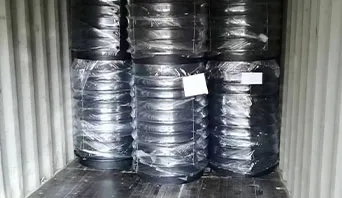
अगस्ट . 29, 2024 19:53 Back to list
Temperature Settings for Boilers - Optimize Your Heating Efficiency
Temperature Setting for Boiler Efficiency
When it comes to optimizing boiler performance, one of the most important factors to consider is the temperature setting. The right temperature not only ensures efficient operation but also enhances safety and longevity of the equipment. Understanding how to set the temperature correctly can lead to reduced energy consumption, lower operational costs, and improved environmental impact.
Temperature Setting for Boiler Efficiency
For residential boilers, a typical setting is around 140°F to 180°F (60°C to 82°C). This range is generally sufficient for space heating and domestic hot water needs while preventing excessive energy consumption. Setting the temperature too high can lead to overheating, resulting in energy waste and higher utility bills. Additionally, extremely high temperatures can put unnecessary stress on the boiler components, leading to premature wear and potential failures.
temperature setting for boiler

In commercial and industrial settings, the temperature setting can vary significantly based on the application. For instance, steam boilers might operate at temperatures exceeding 212°F (100°C), depending on the demands of the processes they serve. It is essential to consult the manufacturer's specifications and guidelines to determine the appropriate temperature settings for specific industrial applications.
Moreover, adjusting the temperature setting according to seasonal changes can further enhance boiler efficiency. During milder months, reducing the temperature can save fuel without compromising comfort. Many modern boilers come equipped with advanced controls that allow for automatic adjustments based on outdoor temperatures or user preferences, further optimizing energy usage.
Safety is another critical factor related to temperature settings. Operating a boiler at excessively high temperatures can lead to dangerous pressure build-ups, increasing the risk of explosions or system failures. Therefore, ensuring that safety valves and pressure relief systems are in place and functioning correctly is vital.
In conclusion, setting the appropriate temperature for a boiler is essential for maximizing efficiency, reducing energy costs, and ensuring safety and longevity. Regular maintenance, along with mindful temperature adjustments based on the season and specific needs, can lead to significant benefits. By understanding and implementing effective temperature settings, both residential and commercial users can enjoy optimal performance and sustainability from their boiler systems.
-
Best Steam Boiler Design PDF Free Design Calculation & Diagram Downloads
NewsJun.10,2025
-
Hot Boiler Water Heater Efficient Heating Solutions for Home & Commercial Use
NewsJun.10,2025
-
Steam Boiler Safety Devices High-Quality Protection Valves
NewsJun.10,2025
-
Ultimate Steam Boiler Checklist for Safety & Efficiency
NewsJun.10,2025
-
Optimal Hot Water Boiler Temperature Setting Guide
NewsJun.10,2025
-
Effective Hot Water Boiler Chemical Treatment Protect & Maintain
NewsJun.09,2025
Related PRODUCTS






















